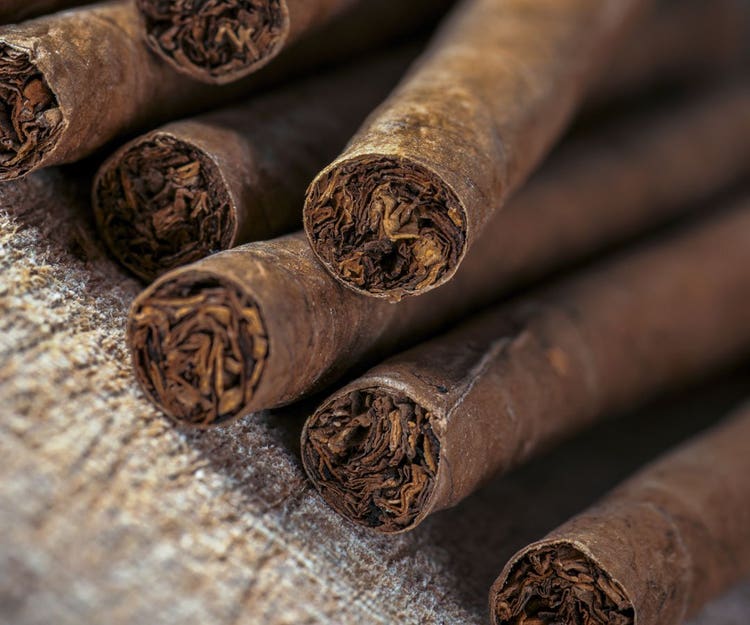
Cigar Bloom vs. Mold: What’s the dif’?
One of the more unnerving experiences for cigar smokers, especially those who are new to the wonderful world of premium handmade cigars, is when they discover that the wrappers on some of their prized primos have developed a white, fuzzy substance. The knee-jerk reaction to this is usually something like, “Houston, we’ve got a problem.”
Well, you may have a problem and you may not. It all depends on what that substance on your cigars really is. It may be one of two things: “the good,” something called “Bloom,” also referred to as “Plume,” or, “the bad and the ugly,” good old-fashioned mold.
Bloom is what happens when the oils in the tobaccos disperse throughout the cigar and eventually reach the wrapper. These “essential oils” congregate on the surface of a cigar and appear as very tiny white crystals.

So, what should you do if your cigars have bloom? Nada. Bloom is harmless and is a common feature on cigars that have aged for long periods of time, especially cigars with oily wrappers. It’s a sign that your cigars are aging nicely and still healthy. But don’t take it for granted. Keep an eye on it, especially if you’ve never encountered it before, because it may turn out to be something else. Assuming it is bloom (or plume),
very lightly brush-off the bloom with your finger. It will not affect the flavor or bouquet of your cigars.

If your cigars have mold the first thing you want to do is to get the affected sticks away from your other cigars. This leads to the oft-asked question, “Should you toss a stick that has mold on it?” To be absolutely safe, yes. Many cigar smokers wipe the mold off their cigars and smoke them anyway. You can try it, but it could be risky, because mold comes in different varieties, some of which can cause illness if they are allowed to culture in the wrong place, like in your mouth or in your lungs. Note however, that there are millions of varieties of mold, and not every type will cause illness, but some kinds of mold are able to serve as pathogens in the body and can cause respiratory or other medical conditions.
Mold spreads by producing spores. These spores then spread the fungus to you or to the rest of your cigars. So, if you’re feeling lucky, brush off the mold and smoke them; otherwise, you’re better off trashing them.
When checking your cigars, be sure you always check for signs of mold, especially if your humidity has been on the high side, say 75% and above. If you find some cigars with mold and decide to salvage them, the very least you should do is get them away from your other cigars, wipe off the mold, and move them to a different humidor (preferably empty) or another container. If you take that route, do not humidify the cigars for at least 12 hours. They are probably already too moist, and the idea here is to let them dry out for a while.
Finally, the best medicine for warding off mold spores is to keep the humidity level in your humidors from getting too high in the first place.
Thanks to David “Doc” Diaz at www.StogieFresh.com for providing most of the source material for this article.